
The United States Military Academy (USMA), also referred to metonymically as West Point or simply as Army, is a United States service academy in West Point, New York. It was originally established as a fort during the American Revolutionary War, as it sits on strategic high ground overlooking the Hudson River 50 miles (80 km) north of New York City. Founded in 1802, it is the oldest of the five American service academies and educates cadets for commissioning into the United States Army. The academic program grants the Bachelor of Science degree with a curriculum that grades cadets' performance upon a broad academic program, military leadership performance, and mandatory participation in competitive athletics.

Alton is a city on the Mississippi River in Madison County, Illinois, United States, about 18 miles (29 km) north of St. Louis, Missouri. The population was 25,676 at the 2020 census. It is a part of the River Bend area in the Metro-East region of the Greater St. Louis metropolitan area.

The Virginia Military Institute (VMI) is a public senior military college in Lexington, Virginia. It was founded in 1839 as America's first state military college and is the oldest public senior military college in the United States. In keeping with its founding principles and unlike any other senior military college in the United States, VMI enrolls cadets only and awards bachelor's degrees exclusively. The institute grants degrees in 14 disciplines in engineering, science, and the liberal arts.

New Mexico Military Institute (NMMI) is a public military junior college and high school in Roswell, New Mexico. Founded in 1891, NMMI operates under the auspices of the State of New Mexico, under a dedicated Board of Regents that reports to the Governor of New Mexico. Located in downtown Roswell, NMMI enrolls nearly 1,000 cadets at the junior college and high school levels each year. NMMI is the only state-supported military college located in the western United States and has many notable alumni who have served at senior levels in the military and private sector.

Kemper Military School & College was a private military school located in Boonville, Missouri. Founded in 1844, Kemper filed for bankruptcy and closed in 2002. The school's motto was "Nunquam Non Paratus".

Woodward Academy is a private, co-educational college-preparatory school for pre-kindergarten to 12th grade on two campuses located in College Park and Johns Creek, Georgia, United States, within the Atlanta metropolitan area.

The Citadel Military College of South Carolina is a public senior military college in Charleston, South Carolina, United States. Established in 1842, it is the third oldest of the six senior military colleges in the United States. The Citadel was initially established as two schools to educate young men from around the state, while simultaneously protecting the South Carolina State Arsenals in both Columbia and Charleston.

Valley Forge Military Academy and College (VFMAC) is a private boarding school and military junior college in Wayne, Pennsylvania. It follows in the traditional military school format with army traditions.
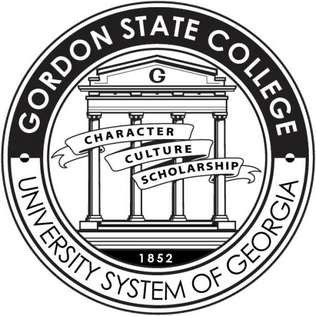
Gordon State College is a public college in Barnesville, Georgia. A member of the University System of Georgia (USG), Gordon State's spring 2023 enrollment was 2,846 students. The college campus incorporates 235 acres (95 ha), which includes academic buildings, residence halls, the student activity and recreation center, an indoor swimming facility, ropes course, walking trail, outdoor basketball courts, tennis courts, athletic fields, and racquetball courts.
New York Military Academy (NYMA) is a college preparatory, co-ed boarding school in the suburban town of Cornwall, 60 miles (97 km) north of New York City, and one of the oldest military schools in the United States. Originally a boys' school, it started admitting girls in 1975.
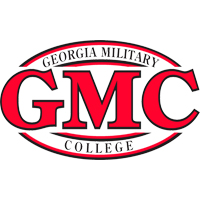
Georgia Military College (GMC) is a public military junior college in Milledgeville, Georgia. It is divided into the junior college, a military junior college program, high school, middle school, and elementary school. It was originally known as Middle Georgia Military and Agricultural College, until 1900. While GMC is a state-chartered and funded institution, its governance is not overseen by either the Board of Regents of the University System of Georgia or the State Board of the Technical College System of Georgia.

Carson Long Military Academy in New Bloomfield, Pennsylvania, was the oldest continually operating college preparatory boarding school and military academy in the United States with mandatory military training for boys in grades 6–12. Maximum enrollment was approximately 235 student cadets.
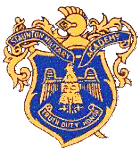
Staunton Military Academy was a private all-male military school located in Staunton, Virginia. Founded in 1884, the academy closed in 1976. The school was highly regarded for its academic and military programs, and many notable American political and military leaders were graduates, including Sen. Barry Goldwater, the 1964 Republican presidential candidate, and his son, Rep. Barry Goldwater Jr., 1960's folk singer Phil Ochs, and John Dean, a White House Counsel who was a central figure in the Watergate scandal of the early 1970s.

Hargrave Military Academy (HMA) is a private, all-male, military boarding school located in the town of Chatham, Virginia. Hargrave is affiliated with the Baptist General Association of Virginia emphasizing Christian values that focuses on a college and military preparatory program. The school serves boys from around the world for grade 7 through post-graduate (PG). Hargrave was named a National School of Character in 2016. Hargrave is accredited by the Virginia Association of Independent Schools and nationally by AdvancEd, and is a member of the Association of Military Colleges and Schools of the United States and the National Association of Independent Schools. The school's campus is listed on the National Register of Historic Places.
Wentworth Military Academy and College was a private two-year military college and high school in Lexington, Missouri, one of six military junior colleges in the United States. The institution was founded in 1880 and closed in 2017.

Camden Military Academy (CMA) is a private, all-male, military boarding school located in Camden, South Carolina, United States. The State of South Carolina has recognized the institution as the official state military academy of South Carolina. Camden Military Academy accepts male students in grades 7 through 12, also offering a post-graduate year.

The United States Military Academy and grounds were declared a National Historic Landmark in 1960 due to the Revolutionary War history and the age and historic significance of the academy itself. The majority of the buildings in the central cadet area are historic.
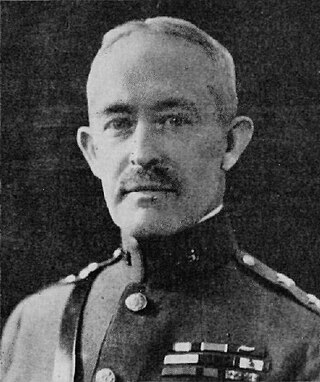
Fred Winchester Sladen was a career United States Army officer who rose to the rank of major general and became Superintendent of the United States Military Academy. He was a son of English-born Joseph A. Sladen (1841-1911) and Martha F. Winchester. The elder Sladen met with Cochise in the company of General Oliver Otis Howard, and was awarded the Medal of Honor for his service in the American Civil War.
William Wentworth Sellers was the fourteenth President of Wentworth Military Academy and College in Lexington, Missouri, serving from 2008 to 2013. He was the fourth generation of his family to head the school, following his great-grandfather Sandford Sellers, who led Wentworth from its founding in 1880 until 1923, his great-uncle Sandford Sellers, Jr. (1923–1933), his grandfather James M. Sellers (1933–1960), and his father James M. Sellers, Jr. (1973–1990). He is also a direct descendant of Academy founder Stephen G. Wentworth. Sellers currently serves as President of the Journey Through Hallowed Ground National Heritage Area.
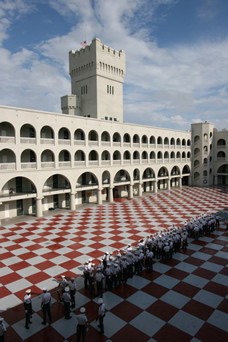
The History of The Citadel began in the early 1820s with the formation of a militia and state arsenal in response to an alleged slave revolt in 1822. By 1842 the arsenal grew into an academy, with the Legislature establishing it as the South Carolina Military Academy. Cadets played a key role in the Civil War by assisting in the battalion firing upon a federal ship three months before the war began. Many Confederate officers attended the school. Renamed in 1910 as The Citadel, the school's academic reputation grew. After moving the campus near Hampton Park in 1922, the college has grown substantially. In 1969, graduate student Maxine Hudson became the first woman to earn a degree from The Citadel. The Citadel saw the graduation of its first Black student, Charles D. Foster in 1970, 16 years after legal segregation ended in public schools. Following a rocky journey, The Citadel graduated its first female Cadet, future congresswoman Nancy Mace, in 1999. The school has produced many military officers, business, and political leaders throughout its history.


















